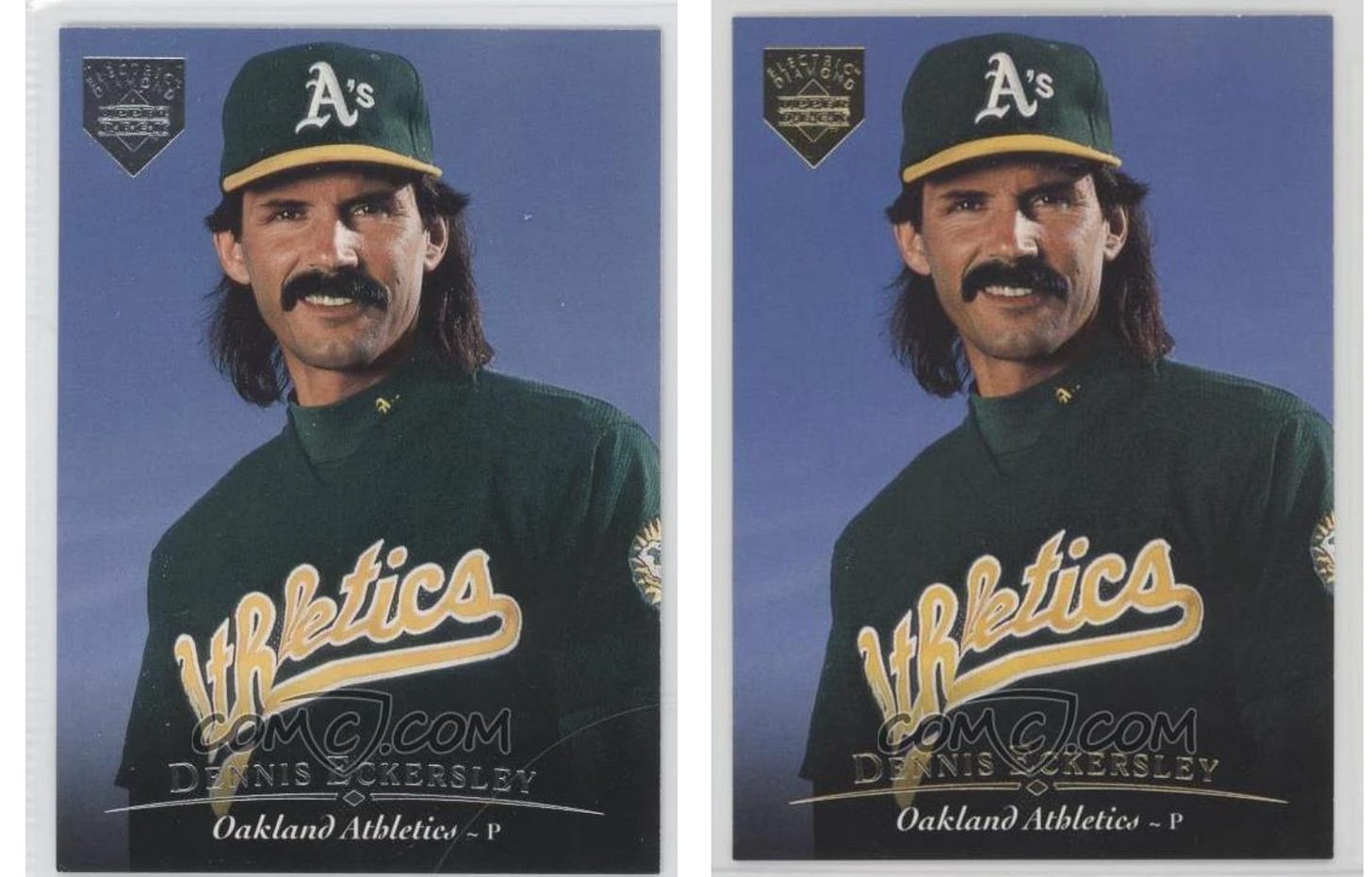Card Clues: Gold, Silver, Diamonds. I Mean... Gold & Silver Diamonds.
Everyone remembers Electric Diamond… but few are profiting from it. Here’s what to look for—and why the Gold version is worth your time (and money). Plus, you don't need a Griffey to make it happen.
Affiliate Disclosure: This post contains affiliate links. As an Amazon Associate and being a part of the eBay Partner Network (and other programs), if you follow these links and make a purchase, I’ll receive a commission (at no cost to you). I appreciate your support!
This is not buying or investment advice. I’m simply reporting the data I’m seeing. Please do your own research and make your own decisions. Just because cards have increased in value up to this point, it doesn’t mean they will continue to do so.
Welcome back to Card Clues—a new series dedicated to the small details that make a big difference. Whether you’re flipping for profit or collecting with purpose, this series is all about seeing what others overlook… and of course, using that edge to your advantage!
We all know that colors matter, and could mean the difference between pennies and profit. Today we are starting with the basic shades—gold and silver, and one of the first to ever distinguish between the two, 1995 Upper Deck.
Think you know 1995 Upper Deck?
Most collectors do. Electric Diamond, cool foil, early parallel nostalgia—we get it.
But here’s the thing: if you’re only chasing the stars or brushing past these thinking they’re all the same, you’re missing out.
Because tucked between the base and the buzz are Gold Electric Diamond cards that most sellers overlook… and sharp eyes are turning into real flips.
And no, you don’t need Griffey to cash in.
So how did we get from standard base cards to this layered gold-versus-silver game of hidden value?
Let’s rewind a bit.
Topps…Gold?
The 1992 Topps Gold set is widely recognized as the first true baseball card parallel set. It featured stamped gold foil on the player and team names, plus a “Topps Gold” watermark on the back.
Now, remember those “Match-the-Stats” game cards where you’d scratch off different positions with the goal of getting three matching stats before finding an out? If successful, you’d then scratch off to reveal your prize, and one of those prizes was a pack of 10 Topps Gold cards!
All of this sounds really cool and fun, right?
Well, unfortunately, the game was compromised, as it was discovered that correct answers can be seen with a flashlight placed under the card!
So came the Topps Gold Winner cards—variations printed specifically for the Match-the-Stats contest. Meaning, to preserve the integrity of the main set, Topps stamped these with “Winner” to separate them from the pack-pulled Golds.
All of that said, neither version are worth much raw, but they marked an important shift: a base card… and its “cooler” counterpart.
Of course, Upper Deck wasn’t going to let Topps have all the fun.
Enter: Electric Diamond
What’s better than gold? Upper Deck was banking on the Diamond.
If you collected in the '90s, you probably remember how slick that already-sweet Griffey looked with the shimmering Upper Deck logo and “electric diamond” scrawled across the bottom.
But the real turning point came in 1995, when Upper Deck introduced not just Electric Diamond… but Electric Diamond Gold.
Now we had levels. Three tiers, to be exact:
Base
Electric Diamond (silver foil)
Electric Diamond Gold (gold foil)
According to BaseballCardPedia, Electric Diamond (silver) could be found one per retail pack, but the Golds? Just one in every 35 packs.
While the 1995 design doesn’t come close to 1994, that gold rarity shows in the prices.
A Ken Griffey Jr. Electric Diamond (silver) recently sold for around $2.74
A raw Gold version? Sold for $71—and that was nearly a year ago
The cheapest raw now listed? Around $115
An SGC 9.5 sold for $177.50
Now, for those of us trying to turn a profit, here comes the fun part:
Keep reading with a 7-day free trial
Subscribe to Ballcard Genius to keep reading this post and get 7 days of free access to the full post archives.








